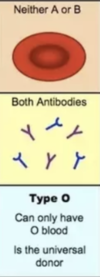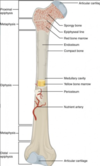Bio: Ch 7, 11 Flashcards
(252 cards)
cardiovascular system consists of
muscular 3 chambered heart, blood vessels, blood
heart is composed of ____ muscle
cardiac
pulmonary circulation
right side of heart accepts deoxygenated blood returning from body and moves it to the lungs by way of pulmonary arteries
systemic circulation
left side of the heart receives oxygenated blood from lungs by way of pulmonary veins and forces it out to the body through aorta
atria
thin walled structures where blood is received from either the venae cavae or pulmonary veins
contract to push blood into ventricles
ventricles
thick walled structures that send blood to lungs (rt) and systemic circulation (lt)
atria are separated from the ventricles by
atrioventricular valves
bicuspid/mitral (lt) and tricuspid (rt)
(LAB RAT)
ventricles are separated from vasculature by
semilunar valves
tricuspid valve
valve between rt atrium and rt ventricle
(LAB RAT)
mitral/bicuspid valve
valve between lt atrium and lt ventricle
(LAB RAT)


pulmonary valve
valve that separates rt ventricle from pulmonary circulatory circulation
aortic valve
valve that separates left entricle from the aorta
the ___ side of the heart is more muscular than the other side because
left
the blood is pumped to the whole body –> higher resistance and pressure
pathway of blood
venae cavae (from body) > right atrium > tricuspid valve > right ventricle > pulmonary valve > pulmonary artery > lungs > pulmonary veins > left atrium > mitral valve > left ventricle > aortic valve > aorta (to body)

SA node
impulse intiation
systole
ventricular contraction
blood is pumped out of ventricles
when AV valves are closed
bundle of His
spread signal to interventricular septum
purkinje fibers
distribute electrical signal through ventricular muscle
intercalculated disk
connect muscle cells
contain many gap junctions directly connecting cytoplasm of adjacent cells
allows for coordinated ventricular contraction
diastole
heart is relaxed
blood fills ventricles
semilunar valves are closed


electric conduction steps
- SA node: impulse initiation
- atria contract
- AV node: pauses signal to allow the ventricles to fill fully
- bundle of his
- purkinje fibers
- ventricles contract

vagus nerve
slows down the heart rate





























